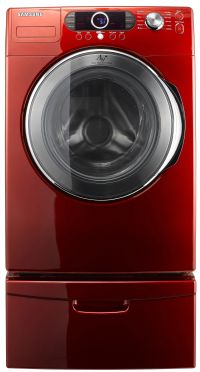 As home-appliance technology continues to move toward the energy-efficient (and brightly colored), more and more consumers are looking to replace their old appliances. But is it really an upgrade?
As home-appliance technology continues to move toward the energy-efficient (and brightly colored), more and more consumers are looking to replace their old appliances. But is it really an upgrade?
No, says Jeanine Van Voorhees, who spent $1,000 on a new energy-saving washer only to find that it coughs up dingy, cat-hair-covered clothes. "I curse that machine every time," she says, and she often washes her loads twice. (I’m no expert, but that doesn’t sound energy efficient to me.)
According to this Wall Street Journal article, Van Voorhees isn’t alone, either.
Many conscientious consumers are reporting that their energy-efficient appliances aren’t living up to the marketing hype. Complaints range from mold and mildew to spotty glassware to water bills that are still high, even with "water-saving" technology.
The article goes on to point out that some of these problems could in part be due to, ahem, user error:
[M]any consumers don’t know they need to use high-efficiency soap or half the amount of regular detergent with front-loading clothes-washers.
…
[C]onsumers [are urged] to take preventive steps [to avoid drainage problems and mold], such as cleaning the drum and door seal periodically or leaving the door open when the washer isn’t in use.
…
Owners also shouldn’t rinse their dishes before putting them in a water-efficient dishwasher. That is because most of the new products are equipped to handle bits of food and rinsing dishes beforehand can negate the water-savings.
So, buyer be aware, I guess.
And if you are looking to make any major appliance purchases, green builders and energy-saving advocates have this to say:
[F]ocus first on refrigerators, because unlike a dishwasher or clothes washer, they run all the time. Air conditioning units, too, tend to be big energy hogs. Cooling accounts for 11 percent of total energy use in the average home, and refrigerators and freezers account for 8 percent, according to government data compiled by the American Council for an Energy-Efficient Economy, a nonprofit group in Washington, D.C. The energy used doing laundry and dishes combined accounts for just 5 percent, according to the council.

